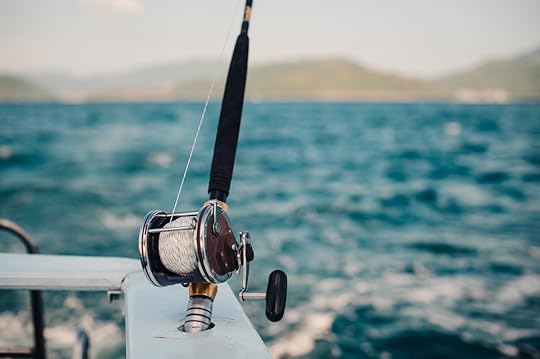Ripley Entertainment Inc.'s Blog, page 44
January 25, 2023
Vikings Helped Cats Conquer the World
Featured in Ripley's Believe It or Not!

Humans have celebrated dogs as their best friends since time immemorial. But the relationship between humans and cats could be characterized as more ambivalent. Recent research into Viking felines demonstrates that domestication often culminated in a grim end. After all, Vikings prized cats for two reasons: their rodent-hunting abilities and their coats. In other words, when felines started slacking on the mousing, they faced transformation into a cape or a coat.
Despite the early pitfalls of pethood, we can all agree that cats have since gained the upper hand. Now among the most pampered pets on the planet, cats continue to give dogs a run for their money when it comes to dollars spent on fancy food, treats, and toys. But there was one thing the Vikings did with cats better than almost anybody else — travel.
In the process, they inadvertently assisted their whiskered friends in conquering the four corners of the globe.
Vicious Raiders and Their Cuddly KittensIn the Dark Ages, the Vikings clinched the role of sea-faring Alphas (male and female), who pillaged and murdered their way through the British Isles, Europe, Iceland, Greenland, and North America the way we go on Caribbean cruises today. Far from a cuddly culture, they made mayhem a hobby, as the poor Irish monks of Lindisfarne found out firsthand.

Vikings approaching Winchester in the 9th century. Via Wikimedia Commons.
Considering their nonchalant approach to violence, you might assume they’d go pet-less or at least stick to wolves or some other toothy, intimidating critter. You know, something super “metal.” But such was far from the case. Instead, the raiders of the North preferred fluffy kittens.
How did cats get to Scandinavia in the first place? Recent examination of feline DNA from archaeological sites dating to 15,000 to 2,700 years ago suggests the ancestors of today’s cats expanded across the world during two distinct periods, separated by millennia. The first migration event saw them move from the Middle East into the Mediterranean. There, local farmers welcomed the four-legged creatures, pleased to have effective rodent-control services in their fields and crop storehouses.
The Second Wave of FelinesThe Mediterranean remains a long way off from the edges of Northern Europe, though. So, how did cats make the jump to modern-day Denmark? The next migratory leap took thousands of years to stage and originated in Egypt. This time, felines got a leg up from seafarers who wanted to deter vermin from setting up shop on their ships. These sailors included Vikings, as attested by one Nordic site in Germany where scientists discovered cat DNA resembling that of ancient Egyptian felines.
This second wave of cat migration began around 1700 B.C. and picked up significant speed by the A.D. 400s. To reach this conclusion, researchers like Julie Bitz-Thorsen of the University of Copenhagen dug through a trove of animal bones at the Zoological Museum, dating from the Bronze Age to the 1600s.
In their examination of the bones, they found grisly evidence, indicating the cats in question served as more than pets or mousers. They also represented the backbone of a localized DIY fur industry. Bitz-Thorsen explains, “You can tell the cats were skinned — they have cut marks, or the neck has been broken.”
From Fur Producers to Treasured (and Fat) PetsPerhaps the most fascinating insight discovered by Bitz-Thorsen and her colleagues was the physiological transformation felines underwent over the centuries. Typically, when animals get domesticated, they shrink in size. For example, your average dog is about one-quarter smaller than its wolf ancestors. (And that says nothing for diminutive breeds like miniature pinschers and teacup toy poodles.)
Egyptians worshipped cats, but Romans and Vikings helped them conquer the world pic.twitter.com/UUGawpJqjg
— Insider Business (@BusinessInsider) March 10, 2019
When it comes to felines, however, DNA shows something altogether surprising. Instead of getting smaller, “domestication” caused cats to balloon. (Enter Garfield!) That said, how domesticated cats actually are remains up for debate. But the science supports significant growth following their association with humans. Archaezoologist Wim Van Neer notes, “Such a shift has never been documented elsewhere, as far as I know.” The bottom line? Vikings fed their cats well, very well. And they passed the tradition down to generations of humans.
It’s a remarkable tale of interspecies cooperation that continues to this day. But we might want to reevaluate the perpetuation of this growth trend. After all, a 2015 study from the University of Edinburgh concluded domestic cats evidence the desire to kill humans and probably would if they got strong enough and big enough. Apparently, some of that fierce Viking attitude rubbed off on their furry friends!
By Engrid Barnett, contributor for Ripleys.com
EXPLORE THE ODD IN PERSON! Discover hundreds of strange and unusual artifacts and get hands-on with unbelievable interactives when you visit a Ripley’s Odditorium!CARTOON 01-25-2023
January 24, 2023
Reeling in Great White Sharks and Photographing Giant Squids
Featured in Ripley's Believe It or Not!

Few places on the planet are as remote and mysterious as the world’s oceans. According to the National Ocean Service, “More than 80 percent of our ocean is unmapped, unobserved, and unexplored.” So, it’s no surprise that giants still lurk in the waters of the deep, whether we’re talking whales, sharks, or squids. Like the undiscovered depths where they dwell, these creatures often remain elusive, with up close and personal encounters few and far between.
But recently, two behemoths bucked these trends, making sensational splashes. Here’s everything you need to know about an unprecedented and unforgettable week in oceanic news.
A Clandestine Cephalopod AppearsOn the coast of the Sea of Japan, you’ll find Toyooka City in Hyogo Prefecture. There, a husband-and-wife diving duo, Yosuke and Miki Tanaka, recently captured extraordinary photos of an 8.2-foot-long giant squid (Architeuthis dux). The Tanakas had the opportunity to catch the stunning photos after a local ferryman gave them a heads-up about a behemoth in the area.
Yosuke and Miki Tanaka own the Dive Resort T-Style, making them well-positioned and prepared to take advantage of the ferryman’s report. They hurried to the location the boatman described and were rewarded with a one-of-a-kind photo op. Not only did they enjoy the chance to snap pics of the tentacled monster, but they also swam with it, something the Tanakas won’t soon forget.
Yosuke Tanaka encountered an 8-foot-long giant squid while diving with his wife off the western coast of Japan. pic.twitter.com/jPZyqhDyA6
— CNN (@CNN) January 19, 2023
Speaking of the experience, Yosuke Tanaka explains, “I could see its tentacles moving. I thought it would be dangerous to be grabbed hard by them and taken off somewhere.” And Tanaka wasn’t even close to seeing the biggest of the bunch. Giant squids can grow upwards of 40 to 45 feet, which is incredible when you consider the critters’ average lifespan of just five years. Tanaka’s photographs will no doubt lend new information to studying these elusive sea animals.
A Great White Shark Gets HookedBut giant squids in the Sea of Japan aren’t the only marine wildlife shocking the world. Campbell Keenan, 12, of Boston, Massachusetts, unexpectedly reeled in a 450-pound great white shark while on a Florida charter boat. Keenan was on vacation with his family in Fort Lauderdale when he hooked the sea giant while sailing on Captain Paul Paolucci’s charter boat.
Keenan’s catch proved so massive that his parents held him down to ensure he didn’t get swept overboard. Paolucci explains, “It took a lot, it took 45 minutes to an hour to catch it. We knew we had something pretty substantial from the initial bite it took about 300 yards out.” But the ship’s crew didn’t realize it was a great white shark until the boy reeled it in about 20 feet.
A must SEA story!
12-year-old Campbell Keenan of Southampton has gained national attention following the catch of a lifetime! 22News sat down with him to hear about the moment he caught a great white shark in FL!
Talking w/ his mom- I learned we have mutual family friends! pic.twitter.com/Dd6bff4nYw
— Ciara Speller (@CiaraSpeller) January 20, 2023
After successfully bringing in the big fish, Paolucci’s crew examined and tagged the critter. All told, it came in at 450 pounds and 130 inches long. They carefully removed the hook and released the “absolutely beautiful female” into the ocean. Keenan remains stoked about the find, noting it’s by far the largest catch he’s ever brought in.
By Engrid Barnett, contributor for Ripleys.com
EXPLORE THE ODD IN PERSON! Discover hundreds of strange and unusual artifacts and get hands-on with unbelievable interactives when you visit a Ripley’s Odditorium!Source: Reeling in Great White Sharks and Photographing Giant Squids
CARTOON 01-24-2023
January 23, 2023
Raising a Family Under the Big Top with Venardos Circus
Featured in Ripley's Believe It or Not!

The Venardos Circus had its first show at a county fair in 2014. Today, the circus tours the U.S. with a talented cast of performers — plus their children! Meet the families of Venardos Circus and see what it’s like growing up under the big top!
Juggling ActAriele Ebacher walks the tightrope on the tips of her toes in pointe shoes! Meanwhile, her husband Jann Damm jumps rope while balancing on the rolla bolla!

Photos by Jasmine Ellsworth, courtesy of Venardos Circus
Ariele and Jann have been performing together since they met at a show in 2011. They married in 2016 and today they have two children, five-year-old Timo and three-year-old Ilsa, who, Believe It or Not!, have become part of their parents’ acts.

Photos by Eric Forrest, courtesy of Venardos Circus
Timo clowns around with his dad in a comedic musical chairs act, and Ilsa helps her mom by bringing Ariele her pointe shoes for her highwire finale! The little ones often steal the show, to their parents’ delight, and, through the circus, are learning anything is possible.
Master MindsAs his name implies, Kevin Venardos is the founder and ringmaster of Venardos Circus. Having previously worked with Ringling Bros. and Barnum & Bailey Circus, one of the largest traveling circuses of all time, Kevin sought to create a more intimate circus experience.
Believe It or Not!, at the age of 22, Kevin Venardos became one of the youngest ringmasters in the history of the Ringling Brothers and Barnum & Bailey Circus! Now, he and his family live on the road as Venardos Circus tours the country.

Photos by Jasmine Ellsworth, courtesy of Venardos Circus
But Kevin is not the only master at this circus — his partner, Marianne Eaves, was the first female master bourbon distiller in Kentucky, and she continues to operate a mobile lab to blend her signature spirits! On top of all this, Kevin and Marianne are raising their two young daughters, Andi Lane and Billie Mae.
Staying FlexibleHusband-and-wife team Manuel and Ilenay Acosta perform mind-bending acrobatics and body-bending acts of contortion together on stage, including their exhilarating Chinese pole routine!

Photos by Jasmine Ellsworth, courtesy of Venardos Circus
The dynamic duo met at circus school in 2007, have toured the world together, and are now married with two kids. For one-year-old Derek and four-year-old Daphne, hanging out backstage surrounded by circus performers is nothing new. In fact, when most babies are just learning to walk, Derek is confidently standing in his father’s hand, balancing as Manuel carefully lifts him high off the ground!
To stay up to date with the Vernados Circus and find out where you can see them live, be sure to follow their Instagram!
Escape the Ordinary With Ripley’s Latest Book!Find this story and more inside Ripley’s all-new book! Escape the Ordinary‘s 256 pages spark curiosity, challenge perception, celebrate differences, and curate a sense of wonder for the weird world around us! Available now on Amazon and at most major retailers.
SAY “NO” TO NORMAL Ripley’s Believe It or Not! Escape the Ordinary transports readers of all ages to a world beyond imagination — where truth is always stranger than fiction! Every turn of the page reveals all-new and all-true stories from around the globe. Filled with stunning photography and engaging content, this book is every curious reader’s ticket to Escape the Ordinary.Source: Raising a Family Under the Big Top with Venardos Circus
CARTOON 01-23-2023
January 22, 2023
CARTOON 01-22-2023
January 21, 2023
CARTOON 01-21-2023
January 20, 2023
The RSPCA’s Weirdest Animal Rescues of 2022
Featured in Ripley's Believe It or Not!

The RSPCA (Royal Society for the Prevention of Cruelty to Animals) responded to multiple “weird and wonderful” animal rescues in 2022 involving animals ranging from a very large hedgehog to a five-foot boa constrictor. Several of the thousands of incidents involved birds, pets, and farm animals that ended up in “sticky” situations, the British charity organization revealed in a press release.
Dermot Murphy, the organization’s inspectorate commissioner, explained, “It’s an honor to be able to lend a hand to animals in desperate need and we hope people enjoy seeing some of the weird and wonderful places animals have found themselves in need of our help.”
In a PrickleIn April, the RSPCA and fire crews helped a very large hedgehog that got stuck in a ground pipe on the Isle of Sheppey Holiday Village in Leysdown-on-Sea, Kent. No one could figure out how the massive creature ended up in there. It was challenging for RSPCA officer Portia Mearns to extract him, so the local Fire and Rescue crew lent some help. Afterwards, the hedgehog was taken to a wildlife rehab center.
Another hedgehog was rescued in Hull, East Yorkshire, in August, and the humans who helped used an unusual tool to release it from an open drain. “It was great teamwork… it involved a little bit of gentle persuasion and the use of some BBQ tongs to carefully ease him out of the drain,” RSPCA’s Gary Cotton told the BBC.
Foxing AroundA fox cub managed to get his head stuck in a car wheel that was stored in a shed in Orpington, London, in April. When rescuer Rodney Kenney arrived, residents told him that the fox’s sibling was also nearby, attentively watching over her brother.
“It is likely he had been trapped for several days without food or water, so the little fox needed to be freed as soon as possible,” Kenney explained. He freed the fox with a little soap, and since the animals’ mother hadn’t been seen in a while, the cubs were taken to a treatment center.
Other foxes RSPCA helped in 2022 include one who got its head stuck in a watering can, another that fell into water and became trapped under a pontoon, and multiple pups who got tangled in sports netting.
Heading OutAnimals seem to have a knack for getting their heads stuck in objects. Over the summer, a sheep got jammed between the bars of a metal field feeding station in Wythenshawe, Greater Manchester, in June.
Rescuer Helen Chapman described the animal as a little chubby ewe who greedily attempted to get extra feed at a station designed for lambs and young sheep. The animal wound up with her “back end stuck outside the bars.” Chapman widened the gaps in the station, and the ewe was able to get out and return farm animal family.
Hopped UpIn August, a toad wedged itself between two decking boards in Willenhall, West Midlands, causing it to get very stressed. Rescuer Ash Moore explained that most of his body was able to squeeze through the gap; however, its legs got trapped on the opposite side. Moore widened the gap between the boards and used some cleaning liquid, so the toad was slippery enough to get out. Vets gave him a once over before releasing him.
In September, a Hispaniolan common tree frog was discovered in a bunch of bananas after traveling 4,300 miles from the Dominican Republic to the UK. A couple found the creature while putting away their groceries.
A Busy YearFinally, a rat in London Colney, Hertfordshire, got stuck in a metal bird feeder in October. Rescuer David Waite said, “The rat must have pushed himself into the metal bird feeder to gorge on the bird seed but then realized his eyes weren’t bigger than his belly, but his belly was bigger than he anticipated.” Waite had to cut the bars of the feeder to release the rat, who didn’t sustain any injuries in the incident. It was set free on the spot.
Other unusual rescue missions by the charity group include a lamb that fell down a six-foot hole, a five-foot boa constrictor that wandered into a McDonalds, and seal pups trapped on sea cliffs.
By Noelle Talmon, contributor for Ripleys.com
EXPLORE THE ODD IN PERSON! Discover hundreds of strange and unusual artifacts and get hands-on with unbelievable interactives when you visit a Ripley’s Odditorium!CARTOON 01-20-2023
Ripley Entertainment Inc.'s Blog
- Ripley Entertainment Inc.'s profile
- 52 followers










